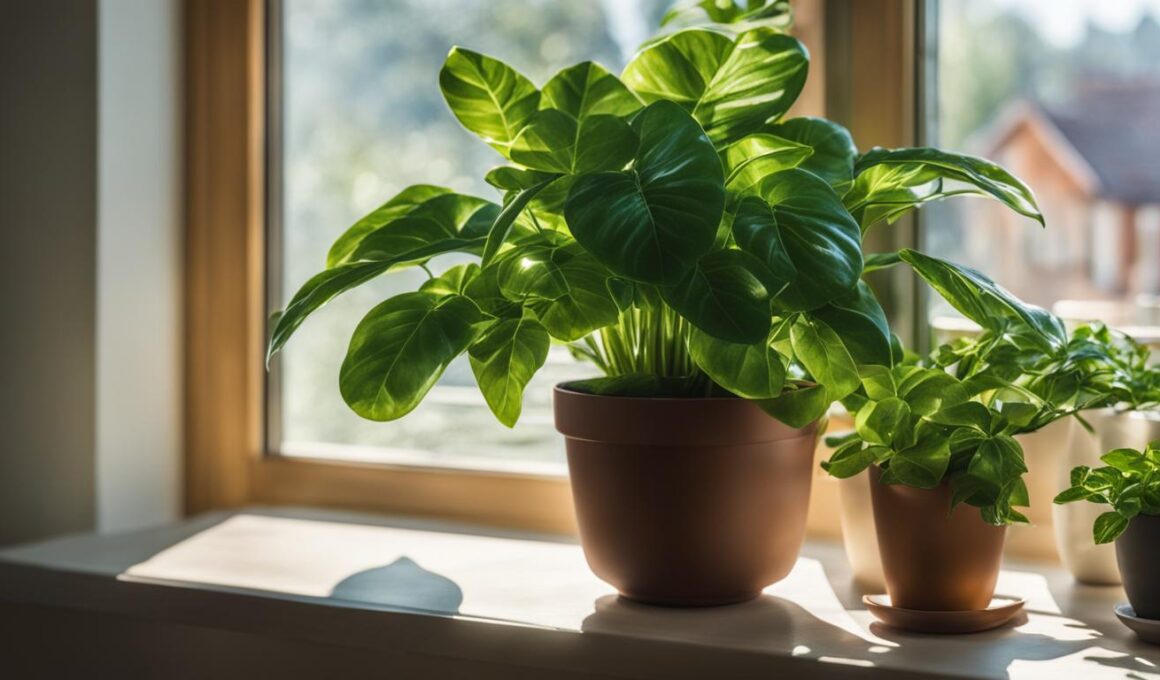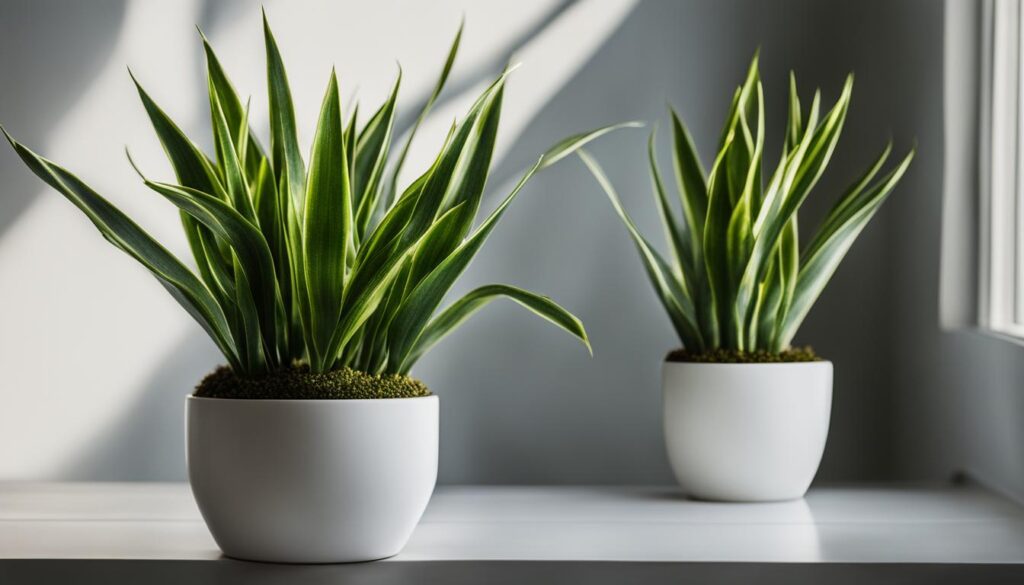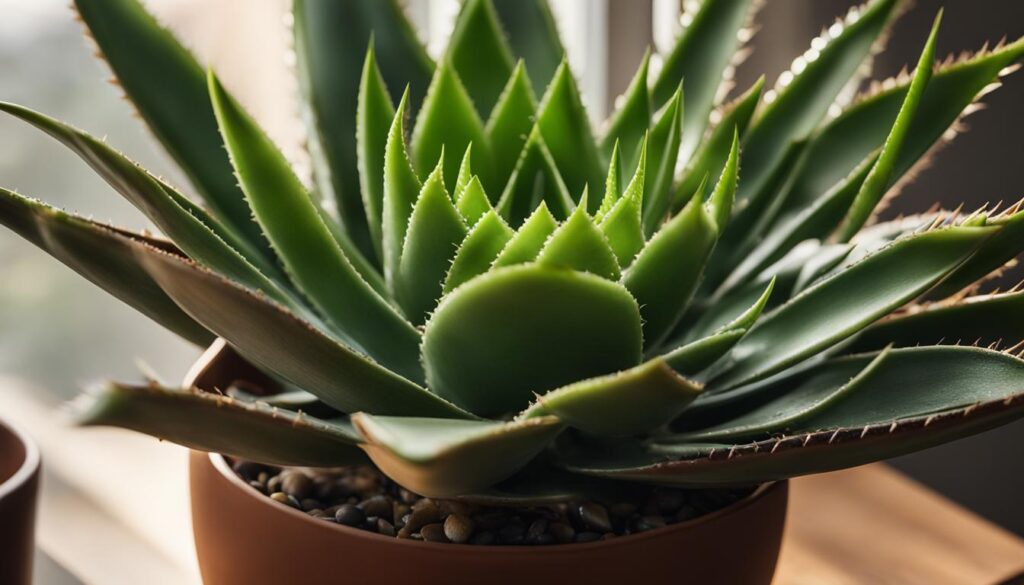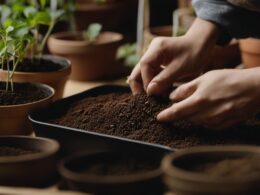Welcome to our guide on easy-to-care-for houseplants! If you’re a beginner looking to add some greenery to your indoor space, you’ve come to the right place. In this article, we’ll introduce you to the top 5 low-maintenance indoor plants that are perfect for beginners like you. These houseplants require minimal effort and will thrive with proper care. Let’s dive in and discover which plants are best suited for your green thumb!
Post Summary:
- Spider plants, snake plants, rubber plants, aloe vera plants, and Monstera deliciosa are all easy to care for and beginner-friendly houseplants.
- These plants have specific care requirements but are generally low-maintenance.
- They can thrive in various light and moisture conditions.
- Spider plants and snake plants are pet-friendly, while rubber plants, aloe vera plants, and Monstera deliciosa are toxic to pets if ingested.
- By choosing these easy-to-care-for houseplants, you can enjoy the benefits of indoor gardening without the stress.
Spider Plants: A Low-Maintenance Favorite
Spider plants are a popular choice for indoor gardeners, thanks to their easy-care nature and attractive appearance. These plants, scientifically known as Chlorophytum comosum, are native to South Africa and are known for their arching leaves and cascading spiderettes.
Spider plants are incredibly low-maintenance and can thrive in a variety of conditions. They are adaptable to different light levels, although they prefer bright, indirect light. This makes them perfect for placing near a window or in well-lit rooms. Additionally, spider plants can tolerate a range of humidity levels, making them suitable for various indoor environments.
When it comes to watering spider plants, it’s important not to overdo it. These plants prefer to dry out slightly between waterings, so it’s best to wait until the top inch of soil feels dry before watering them again. Overwatering can lead to root rot, which can be detrimental to the plant’s health.
One of the fascinating characteristics of spider plants is their ability to produce “babies” or offshoots, which can be easily propagated to create new plants. These offshoots can be left attached to the mother plant or can be cut off and placed in water or soil until they establish roots.
To summarize, spider plants are easy indoor plants that require minimal effort to care for. They thrive in bright, indirect light, and should be watered when the top inch of soil feels dry. With their graceful foliage and effortless propagation, spider plants make a beautiful addition to any indoor space.
Snake Plants: Easy-Care and Air-Purifying
Snake plants, also known as sansevieria, are a popular choice for beginner plant enthusiasts due to their easy-care nature and air-purifying properties. These resilient plants can tolerate low light conditions, making them ideal for homes and offices with limited sunlight.
When it comes to caring for snake plants, it’s important to find the right balance of water and light. Overwatering can be detrimental to these plants, so it’s best to allow the soil to dry out between waterings. A good rule of thumb is to water the snake plant when the top inch of soil feels dry.
Snake plants are excellent air purifiers, removing toxins such as formaldehyde and benzene from the air. They have the ability to convert carbon dioxide into oxygen at night, making them a great choice for bedrooms. Their air-purifying qualities not only contribute to a healthier indoor environment but also add a touch of greenery to any space.
It’s important to note that while snake plants are low-maintenance and beneficial to the air quality in your home, they are toxic to pets if ingested. It’s recommended to keep them out of reach of curious furry friends to ensure their safety.
Air-Purifying Benefits of Snake Plants
| Pollutant | Air-Purifying Effect |
|---|---|
| Formaldehyde | Snake plants can remove formaldehyde from the air, which is commonly found in household products, furniture, and building materials. |
| Benzene | Snake plants can also effectively eliminate benzene, a volatile organic compound (VOC) found in cigarette smoke, gasoline, and certain cleaning products. |
| Trichloroethylene | Snake plants have the ability to filter out trichloroethylene, a toxic chemical found in common household items such as adhesives and paint removers. |
By incorporating snake plants into your indoor space, you not only add a touch of natural beauty but also contribute to a healthier environment for you and your family. With their easy-care requirements and air-purifying benefits, snake plants are an excellent choice for both beginner plant enthusiasts and experienced gardeners alike.
Rubber Plants: Glossy and Low-Maintenance
If you’re looking for a stunning and low-maintenance houseplant, look no further than rubber plants. With their thick, glossy leaves, these indoor plants add a touch of elegance to any room. Not only are rubber plants visually appealing, but they are also relatively easy to care for, making them an excellent choice for beginners.
Rubber plants can tolerate a range of light conditions, from bright indirect light to partial shade. This versatility allows you to place them in different areas of your home, whether it’s near a window or in a corner that receives less light. Just be sure to avoid exposing them to direct sunlight, as it can scorch their leaves.
When it comes to watering rubber plants, it’s important to strike the right balance. Overwatering can lead to root rot, while underwatering can cause the leaves to wilt. As a general rule, water your rubber plant when the top inch of soil feels dry. Be sure to allow any excess water to drain away and avoid letting the plant sit in standing water.
One of the benefits of having a rubber plant is its air-purifying properties. These plants can help remove toxins from the air, making your indoor environment healthier. However, it’s important to note that rubber plants are toxic to pets if ingested, so be sure to keep them out of reach of your furry friends.
Rubber Plant Care Guide
| Light | Watering | Pet Safety |
|---|---|---|
| Bright indirect light to partial shade | Water when top inch of soil is dry | Toxic to pets if ingested |
| Avoid direct sunlight | Allow excess water to drain | Keep out of reach of pets |
Aloe Vera Plants: Succulents with Many Benefits
Aloe vera plants are a popular choice for indoor gardening enthusiasts. Not only are they visually appealing with their fleshy, green leaves, but they also offer numerous benefits. These succulent houseplants are known for their low-maintenance nature, making them perfect for beginners.
When it comes to caring for aloe vera plants, it’s important to provide them with the right conditions. They thrive in bright, indirect sunlight, so placing them near a sunny window is ideal. However, they can tolerate some shade as well. Aloe vera plants are drought-tolerant and don’t require frequent watering. It’s best to let the soil dry out between waterings to prevent overwatering, which can lead to root rot.
Aside from their aesthetic appeal, aloe vera plants offer practical benefits. The gel found within their leaves is well-known for its healing properties. It can be used to moisturize the skin, soothe minor burns and cuts, and even provide relief from sunburns. Having an aloe vera plant at home allows you to access these natural remedies whenever needed.
“Aloe vera plants are not only low-maintenance but also have many practical uses. The gel from their leaves is commonly used for moisturizing the skin and treating minor cuts and sunburns.”
In addition to their healing properties, aloe vera plants are non-toxic to pets, making them a safe choice for households with furry friends. You can enjoy the beauty of these succulents without worrying about any harm coming to your beloved pets.
In summary, aloe vera plants are easy to care for, offering both aesthetic appeal and practical benefits. With their low-maintenance nature, they are perfect for beginners looking to venture into indoor gardening. Whether you’re seeking natural remedies or simply want to add a touch of green to your home, aloe vera plants are a fantastic choice.
Monstera Deliciosa: A Stunning and Low-Maintenance Choice
When it comes to adding a touch of tropical elegance to your indoor space, Monstera deliciosa, also known as the Swiss cheese plant, is an excellent choice. With its large, fenestrated leaves, this plant is sure to make a statement in any room. But what sets Monstera deliciosa apart from other houseplants is its low-maintenance nature, making it perfect for both beginners and experienced plant enthusiasts.
To care for your Monstera deliciosa, place it in a spot with bright, indirect light. This plant can tolerate a range of light conditions, but too much direct sunlight can scorch its leaves. Water your Monstera deliciosa when the top inch of soil feels dry. Overwatering can lead to root rot, so it’s important to let the soil dry out between waterings. Remember to dust the leaves regularly to keep them looking their best.
Monstera Deliciosa Care Guide
| Light | Water | Temperature |
|---|---|---|
| Bright, indirect light | Water when top inch of soil is dry | Between 65°F and 85°F |
| Avoid direct sunlight | Do not overwater | Avoid temperatures below 60°F |
It’s worth noting that Monstera deliciosa is toxic to pets if ingested, so it’s best to keep it out of reach of curious furry friends. With its stunning foliage and easy care requirements, Monstera deliciosa is sure to be a standout addition to your indoor plant collection.
Conclusion
Taking care of houseplants doesn’t have to be a daunting task. If you’re a beginner or simply looking for easy-to-care-for options, there are plenty of low-maintenance indoor plants that are perfect for you.
Spider plants, snake plants, rubber plants, aloe vera plants, and Monstera deliciosa are all excellent choices. These beginner-friendly houseplants have specific care requirements but are generally hassle-free and can thrive in a variety of light and moisture conditions.
By selecting these easy-to-care-for houseplants, you can enjoy the benefits of indoor gardening without the stress. They not only add greenery and beauty to your living space, but they also help purify the air and create a more relaxing ambiance.
– What Are Some Easy To Care For Houseplants That I Can Keep Indoors?
Looking to brighten up your indoor space with low-maintenance greenery? Consider caring for indoor hyacinth blooms, which are easy to care for and add a pop of color to your home. Other great options include succulents, spider plants, and peace lilies, all of which thrive with minimal attention.
FAQ
Are spider plants safe for pets?
Yes, spider plants are safe for pets.
How often should I water a snake plant?
Snake plants should be watered when the top inch of soil feels dry. Allow the soil to dry out between waterings.
Are rubber plants toxic to pets?
Yes, rubber plants are toxic to pets if ingested.
How often should I water an aloe vera plant?
Aloe vera plants should be watered sparingly. Allow the soil to dry out before watering again.
Are Monstera deliciosa plants toxic to pets?
Yes, Monstera deliciosa plants are toxic to pets if ingested.











